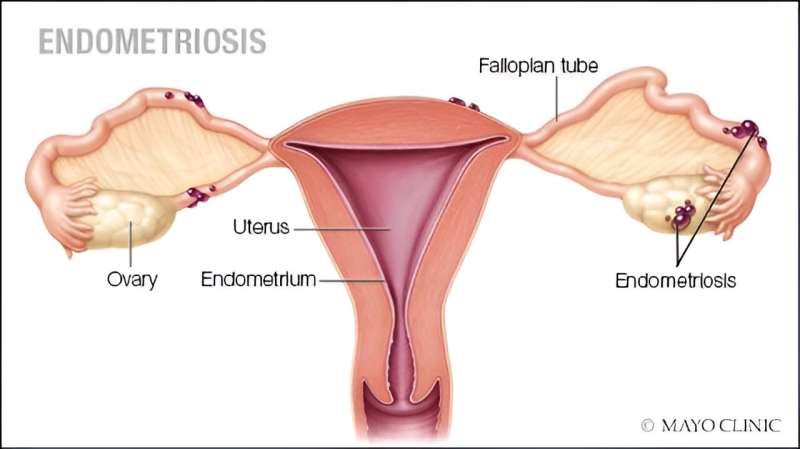Credit: Mayo Clinic
Endometriosis is a painful condition where cells similar to the lining of the uterus grow outside of the uterus. While it most commonly occurs in the pelvis, it can occur anywhere in the abdomen or pelvis.
Dr. Megan Wasson, a minimally invasive gynecologic surgeon at Mayo Clinic, says it's a quality-of-life issue, affecting approximately 1 out of every 10 reproductive-aged people.
"Endometriosis can cause a large inflammatory process throughout the entire body that can result in fatigue and nausea. It can affect the bowels. It can really affect every single organ system," says Dr. Wasson.
Credit: Mayo Clinic News Network
Symptoms of endometriosis
Most frequently, patients will experience pelvic pain or perhaps cramping with their menstrual periods.
"They can also develop pain with intercourse, pain with bowel movements, pain with urination," says Dr. Wasson. "It really can be a whole-body disease."
Women can manage symptoms with over-the-counter medication or medication to stabilize hormones, but that doesn't cure endometriosis.
"The only way to really get to the root of endometriosis is surgery," says Dr. Wasson.
Laparoscopic surgery is a less invasive option, commonly used to diagnose and treat endometriosis. Dr. Wasson says advanced technology can manage even more severe cases of endometriosis with a minimally invasive approach.
"If we remove the disease, if we get the endometriosis out of the body, it can improve those symptoms and improve quality of life," Dr. Wasson says.
Provided by Mayo Clinic
























